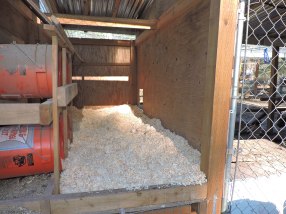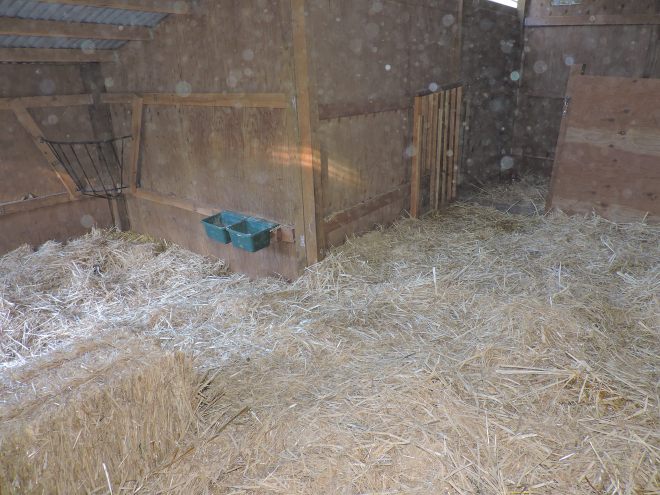A couple of people have asked me about the deep litter method and so I thought I would put my thoughts on paper. I always hesitate to write these types of blogs because it just goes against what I believe. People have approached us about interning on the farm and my response is typically, “dude, seriously? I’m like the farming version of the adult that’s faking it until someone more adult-ish shows up.”

Truly though, I have an issue with the ‘right way’ to do things. I believe that farming is like making chicken soup. Pick any two families and they will not have the same recipe. Yes there are similar parts….like most will have chicken and some form of vegetables in the recipe, but how they cook it and what else they add are really very different. Farming is a lot like that. It depends on your situation, your animals, your soil, your available funds and resources….it really just depends. So I hate to tell someone how to do things, I can only tell them what has worked (or not worked) for me. On that same thread, I really find I have a problem taking advice from more experienced farmers who approach advice as if there is only one way to do things for the same reason. of course there are always those that want to argue their point because it seems that some people just really have a difficult time with other’s opinions. With all that being said, I’ve also agreed to share my experiences on the farm with you guys. So with some trepidation, I’m sharing my deep litter experiences, keeping in mind that this is MY experience.

We’ve used buckets as nesting boxes in this coop. They’re removable and easier to clean.
Our first couple of years on the farm I used the deep litter method for the goat barns. For those that aren’t familiar with the term deep litter, it simply means that you only rake and remove the heaviest of poop areas on a regular basis and then add more bedding over the less dirty, used bedding to make sure the animals have a dry, clean area. This goes on over the winter months with the ever growing, thick layers giving more insulation from the cold ground and the dirty bottom layer of bedding are buried and beginning to break down in compost putting off some natural heat.
There are some definite advantages to this method. If you have limited manpower most of the year this allows your animals to have a clean bedding and a well insulated area with minimal work. Of course there is the once a year (or more) heavy duty cleaning where several feet of used bedding is removed from the barn, but this can usually be done in a day with the help of others. The idea of thicker insulation really appealed to me and made me feel better about our goats being in the drafty barn. Also when my husband was traveling a lot for work and having just moved to a new farm that needed a lot of work, the lack of weekly barn cleanings was also a huge plus in my book.

With all the dust motes from the straw visible in this picture, it’s no surprise that air quality needs to be a concern in barn care.
The other side of the coin is that using the deep litter method works best with a smaller herd in a well ventilated structure. The ammonia emissions from animal waste can build up causing air pollution concerns and resulting health issues. We have one doe that has had a chronic cough and after much testing and work with our vet, we believe it’s allergies. However, I do have to wonder if the winter air quality in the barn is aggravating her lungs making her cough worse. This year we’ve decided to switch over from the deep litter method to bi-weekly cleanings and see if her cough does better. Yup, it’s going to be more work, but the herd has grown and the barn has not, so the bedding is building up quicker than previously and the air quality is poorer. We’ve added more vents and cut in a back door to help with the air movement, but we’re still going to try a more traditional method and see if it helps with her cough.
Some things to consider if you’re thinking about going this route include the size of your herd, how good the drainage is in your barn, air movement in the barn and overall health of the herd to start. So in summary, yes the deep litter method worked for us. During a particularly difficult time the simplicity really saved my sanity while allowing my animals a warm and clean shelter. It was a great idea…….for a while. But like I said, times change, herd’s change and whether it’s the right method for you, just depends……
